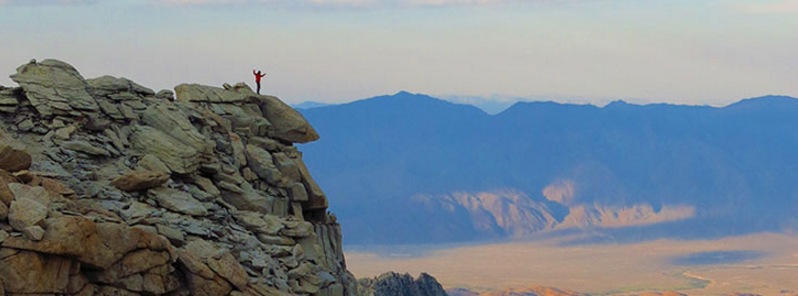The mystery of Sierra Nevada’s age solved

A recent research found that California's iconic mountain range – Sierra Nevada – is much older than it was thought. New techniques used in research also revealed new secrets mountain range had been holding to itself.
One of the biggest mysteries in the geological history of the western United States is how old is Sierra Nevada mountain range? Recent work, which included Stanford scientists, provides an answer and includes the climate in the area that could assist future climate change estimations. The research used advanced geochemical techniques to investigate three of the most important aspects – age, elevation and climate.
"The age of the Sierras is a fundamental question in geology. It's one of the largest mountain belts in the world and it influences all western climate, so understanding the elevation history couples to all these different fields of research," said Page Chamberlain, a professor of Earth system science at Stanford and co-author on the study.
"Understanding surface elevation is extraordinarily important because it is the physical representation of the balance between deep-Earth processes, such as mantle convection and plate tectonics and surface processes, such as erosion, the water cycle, and climate," said Hari Mix, who began the research as a graduate student at Stanford.
The age of Sierra Nevada has been a debating issue for decades. Most of the time, it was believed that mountains were young and the majority of their uplift occurred about 3 to 5 million years ago. However, a study published by Stanford researchers back in 2006 suggested that mountain range reached its current elevation about 40 million years ago.
Confirming the previous work and expanding its results, Mix and his colleagues used the very same samples, but this time, they analyzed oxygen instead of hydrogen.
"Oxygen isotopes are more resistant to exchange and alteration than hydrogen isotopes, so our record of the Sierra Nevada uplift is more robust than previous studies," said Mix, who is now the assistant professor at Santa Clara University.
"The preponderance of evidence that the Northern Sierras were high since 40 million years ago is just crushingly definitive," said Chamberlain.
The researchers needed to understand how the Sierras had stood 40 million years ago, in order to accurately determine it's true age. Attempts made previously provided only aspects of the Sierras history, but the new approach by the team made age determination possible.
The team analyzed oxygen fingerprints in clay minerals, they were able to uncover historical rainfall patterns from fingerprints, which made possible to determine, if patterns matched those expected from high ranges. It was found that signal was consistent tens of millions years ago, indicating to range's uplifting at the time. Sierra's elevation history with knowledge of the climate system and deep-Earth processes were coupled and the work helps to understand, which processes could have the most important in shaping today's Sierra Nevada.
According to Mix's study, the Sierra Nevada formed roughly 40 million years ago, a time geologists refer to as the Eocene. The Eocene was the most recent time in Earth's history when carbon dioxide levels were higher than they are today, and many scientists view this as the worst-case scenario analog for today's anthropogenic climate change.
By combining the hydrogen isotope record with the oxygen isotope record, Mix and his colleagues were able to effectively create a thermometer, and their findings suggest that the Sierra formed under very different climate conditions than today.
"The temperatures that we determined by combining the hydrogen and oxygen records are 10 – 15 °C (18 to 27 °F) hotter than the modern Northern Sierra," Mix said.
The high temperatures inferred from the hydrogen and oxygen fingerprints are consistent with other estimates of Eocene climate based on analysis of leaf fossils, other minerals, and climate models. This new analysis has the added benefit of aiding climate scientists who investigate today's planet. Scientists test their models against ancient climates, for which a lot of data are available.
"Climate modelers use the elevation and temperature reconstructions like those we investigated as boundary conditions for their models," Mix said. "Hopefully, these new and improved constraints will help modelers test the many ways in which different components of the Earth system interact with one another, and give us better information about today's planet as well."
Reference:
- "A hot and high Eocene Sierra Nevada" – Hari T. Mix, Daniel E. Ibarra, Andreas Mulch, Stephen A. Graham, C. Page Chamberlain – GSA Bulletin – October 21, 2015 – DOI:10.1130/B31294.1
Featured image: Stanford Earth alum Hari Mix stands high in the Sierra Nevada. Credit: Hari Mix/Stanford Earth

Commenting rules and guidelines
We value the thoughts and opinions of our readers and welcome healthy discussions on our website. In order to maintain a respectful and positive community, we ask that all commenters follow these rules.